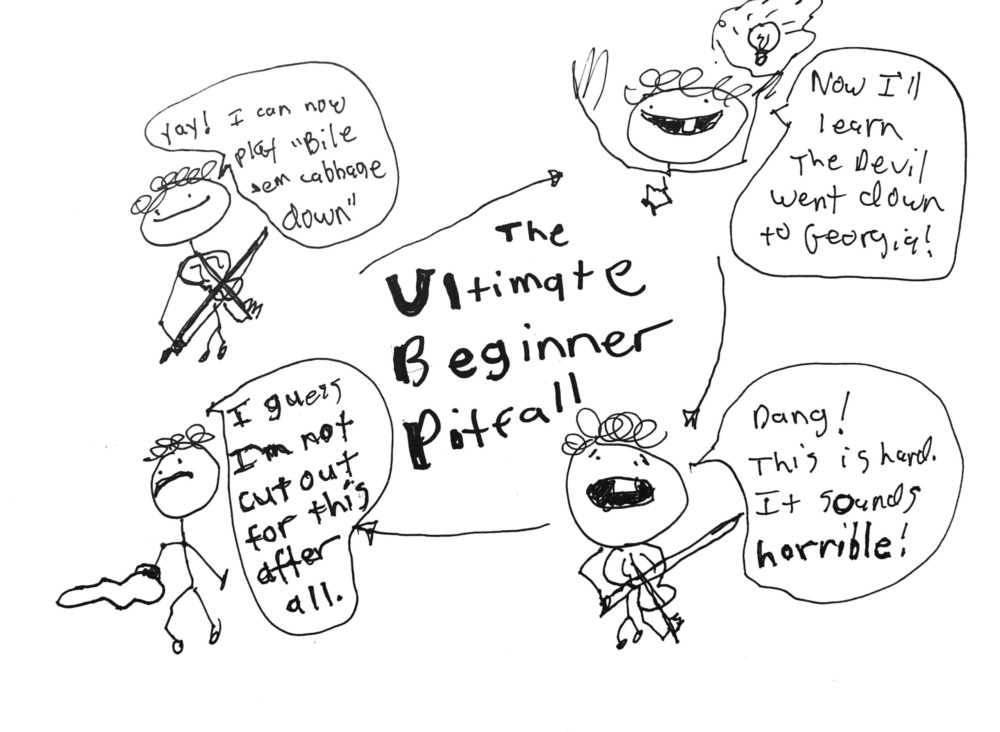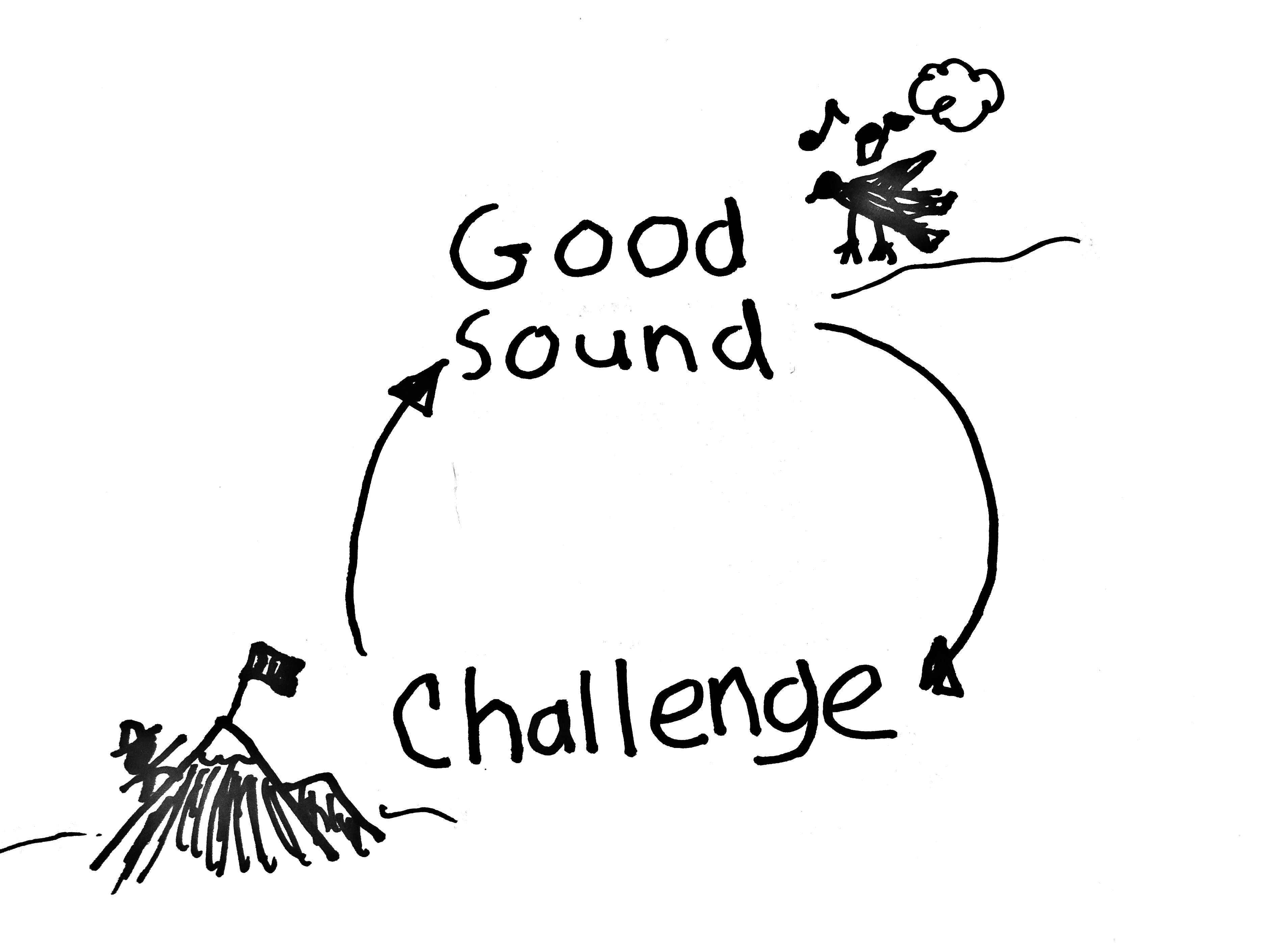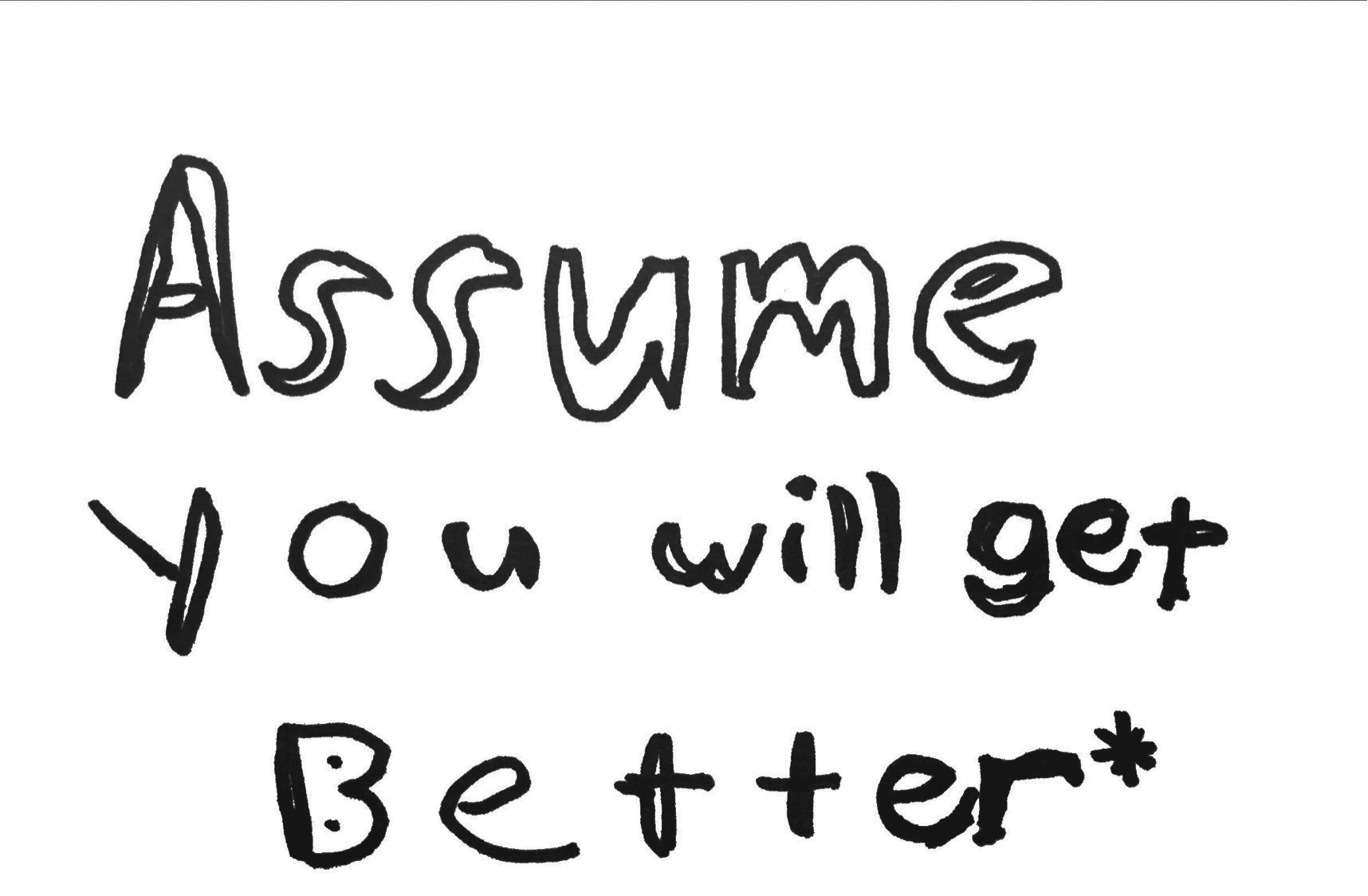A FiddleHed named Dave wrote to me because he was struggling with the advanced version of Blackest Crow. In his email, it became clear that he hadn’t been playing very long.
That version of the tune is challenging if you are new to the fiddle. It involves double stops, tricky triplets, slides and some fast embellishments:
Even just playing double stops on two open strings is difficult for beginners. Not to mention, doing it on a tune with all the other things you have to remember and get right.
In a nutshell…
The ultimate pitfall for beginners: they try to do stuff that’s way too advanced.
And on a related note, they consume new techniques and songs too quickly.
The antidote is to go deep on one simple thing and to enjoy it as much as possible.
I get it. You are super-excited to be learning the fiddle. You learn a few tunes and then when realize you are starting to get it. But soon you’re impatient to learn the next thing. Then it’s off to the races…
The danger is that you might get discouraged if you play stuff you’re not ready for. You might start to think, “Maybe the fiddle is not for me after all.”
Another danger for beginners: they don’t fully learn one thing because they’ve already leapfrogged to the next thing.
The overall effect is that you are just treading water instead of swimming. In either case, all that excitement and momentum might turn into frustration and doubt.

How to avoid the Ultimate Beginner Pitfall
I recommend you view every tune and exercise as a journey. As with all great journeys, the trick is to enjoy the ride instead of obsessing over what happens at the destination. If you manage to stay with something awhile, it becomes a friend and ally as you learn new things.
For example, once you learn Oh Susannah well, you can use it to practice a new bowing like slur 2.
Let’s look at three things you can do to make the journey productive and fun.
- Deliberate practice
- Creative practice
- Enjoyable practice
Deliberate practice
This means you focus on specific areas of improvement. If your bow sounds scratchy, you don’t practice it by continuing to play Oh Susannah, or whatever tune you are learning. You practice bowing on open strings. If that’s hard too, then experiment with different, things: bow tilt, fiddle angle, pressure, speed etc.
If your bow is not scratchy on open strings, do progressively more complex things. If you hit a roadblock along the way, then that’s the point where you should practice. Perhaps you can play open strings without scratchiness, but going from A0-D2 is scratchy. That is where you should focus your time and energy.
This is the idea behind the way I present tunes in “Learning Chunks”:
Oh Susannah, first quarter learning chunks
Warm-ups
Key intervals:
D2-A0
A0-1
↓
(D0-1)-2-A0-0-1-0-D2-0-1-2-2-1-0-1-1
Sing then play: Well I come from Alabama with a banjo on my knee

Creative practice
So now you know your bow sounds scratchy when you go from A0-D2. You can employ a bunch of different practice techniques to work through this.
- Looping with a drone
- Practice this in a continuous loop with a drone (in this case D drone)
- Play with rhythmic variation
- Hoedown, tucka, triplets, swing doubles, etc.
- Alternate between the challenge and a scale
- Practice A0-D2 for a while, then just play a D major scale
- Start it on another string (transposition)
- Practice D0-G2
- Play it at different speeds
- Add different textures: staccato, tremolo, plucking
- Alternate between singing and playing
- Play it with your eyes closed.
Enjoyable practice
Simply put, if you make it your goal to enjoy the practice, you will be much more likely to continue. And so I constantly turn the attention of the student to playing with a good sound.
If you can play one note with a good sound, then it seems clear that you could eventually play two notes with good sound. And then three notes, then a scale, and then a tune.
Sure, you will be challenged by new things that are hard and not fun at first. Be kind to yourself and pause on those from time to time to simply play a single good-sounding. Then go gradually to more complex and challenging things again.

The art and practice of fiddling
I often like to repeat the advice that Earl Scruggs gave in his banjo book, Repeat A Thousand Times. But this doesn’t mean that you should practice like a robot. Make the your sessions engaging and fun. Learn to practice one thing in many different ways. What can you do to re-invent it? This is both the art and practice of fiddling.
Travel writer Rick Steves says, “Assume you will return.” He’s saying that if you’re on a trip, don’t worry about packing every possible moment with sightseeing. Enjoy what you are doing as you do it.
The same philosophy can be applied to learning music (or learning anything). There is an infinite number of things to learn. Instead of worrying about what you might be missing out on, just get really into what you are doing now. I like to alter Rick’s saying to “assume you’ll get better”.

You might find that you breathe new life into the tune when you approach it this way. You’ll also wind up with a better sound. This will give you the confidence to do more advanced tunes and techniques. The main benefit of this approach is that you give your body a chance to learn something well. This will feel good and bring joy to the present moment of playing music.
Further reading
Three Phases of Learning a Tune
Two ways I can help you level up your fiddling
- Sign up for the FiddleHed newsletter below.
- Sign up for the Free Two-week Trial. You’ll get full access to all courses and group lessons. Plus, I’ll send you some free lessons tailored to your current skill level.
Thanks for being here 🙏[/mepr-hide]

As an intermediate beginner with 15 years of self-taught fiddling, I am working through your beginner’s series and starting to rekindle the fire. New methods of practice. I can play all these tunes if not by ear but find myself struggling with some of the adaptation (Hoe down eek). This is helping. Started a journal (a tip from your office hours yesterday). hope to keep this up. Thanks, Jason
Thank you for sharing, Steve. It’s great to hear one another’s methods 🙂 Glad the program is working well for you.
Putting goals out there helps solidify them, way to be!
I bought my first violin about 6 0r 7years ago and watched a few of your lessons on my phone. I was still working full time then and didn’t continue. I”m now semi-retired. I only work 4 1/2 days per week so I now have time for my fiddle!. This letter has really encouraged me. “Assume you will get better” was the best thing I’ve read. But I am still struggling to organize my practice. I have become addicted to my fiddle and can get very grumpy if I don’t get me fiddle time. Thanks for all you work making learning this beautiful instrument fun; difficult but fun!
Cherry
Jason — Thanks so much! This is what I’ve been looking for, and it’s working!! I WANT to enjoy each practice and I also WANT to sound better NOW. These workable ideas are already helping me improve. A gazillion bazillion thanks!
Omg — this is ME! I love music so much that I always want to play tunes that are way beyond my ability!!! Thank you for the reminder and the encouragement. PS – It was a challenge for me play Oh Susanna that fast… but I finally got it 🙂
Very wise advice, even if easier said than done. Also very valuable for me, since I started my own fiddle journey late last year with another online fiddle course that was helpful at first, but then got too advanced too quickly, with little help on basic techniques. I’m so thankful I discovered the FiddleHed YouTube channel and then recently became a FiddleHed student. It’s lifted me out of the growing discouragement I was feeling, and has made me excited again to be learning the fiddle!
Thank you Jason, for continuing to grow your website and lessons. I began fiddling in 2014 at age 49. Being left handed, I turned my fiddle upside down and played backwards. Your free lessons, at the time, taught me so very much. I am so happy and to be subscribed for your lessons. You are THE BEST!
Hey Kayla,
Thanks for saying that! Messages like this keep me going…
Thanks, Jason, It’s like you got into my head! I get impatient and zoom ahead to tunes that are too advanced for me. And then I get discouraged that I sound so bad and feel like I’ll “never be any good.” It’s tricky talking myself into continuing to practice, but these strategies will help a lot!
Thanks, Jason, It’s like you got into my head! I get impatient and zoom ahead to tunes that are too advanced for me. And then I get discouraged that I sound so bad and feel like I’ll “never be any good.” It’s tricky talking myself into continuing to practice, but these strategies will help a lot! 🙂
I watched an interview with Charlie Daniels. He was asked if he ever got tired of playing The Devil Went Down To Georgia. His answer was, no, because I have never played it perfect! Every time I play it, I play it better but I’ve never played it perfect.
Good,solid advice!!!!!! I agree it should be read daily
This is a great post and one every FiddleHedder should read often in my humble opinion. I’ve been rethinking my own approach to my fiddling and this reinforces some decisions I’ve made.
Excellent Jason. Thank you
Mike (Frank’s Fiddle)
I ENJOYED and RELATED to every word, Jason. Thank you so much.
Last year a bunch of friends put together a memorial for a friend who was a musician.
My beginning dulcimer friend and I wanted to participate, so we learned Bile em Cabbage, Wildwood Flower and May the Circle Be Unbroken.
We made songsheets for everyone to sing along, practiced with the band, and felt great by picking tunes we could learn and have fun playing. You can imagine a whole group of people and musicians rockin’ on Bile em Cabbage. Yes, simple and fun and the BEST! Thanks for all your inspiration.